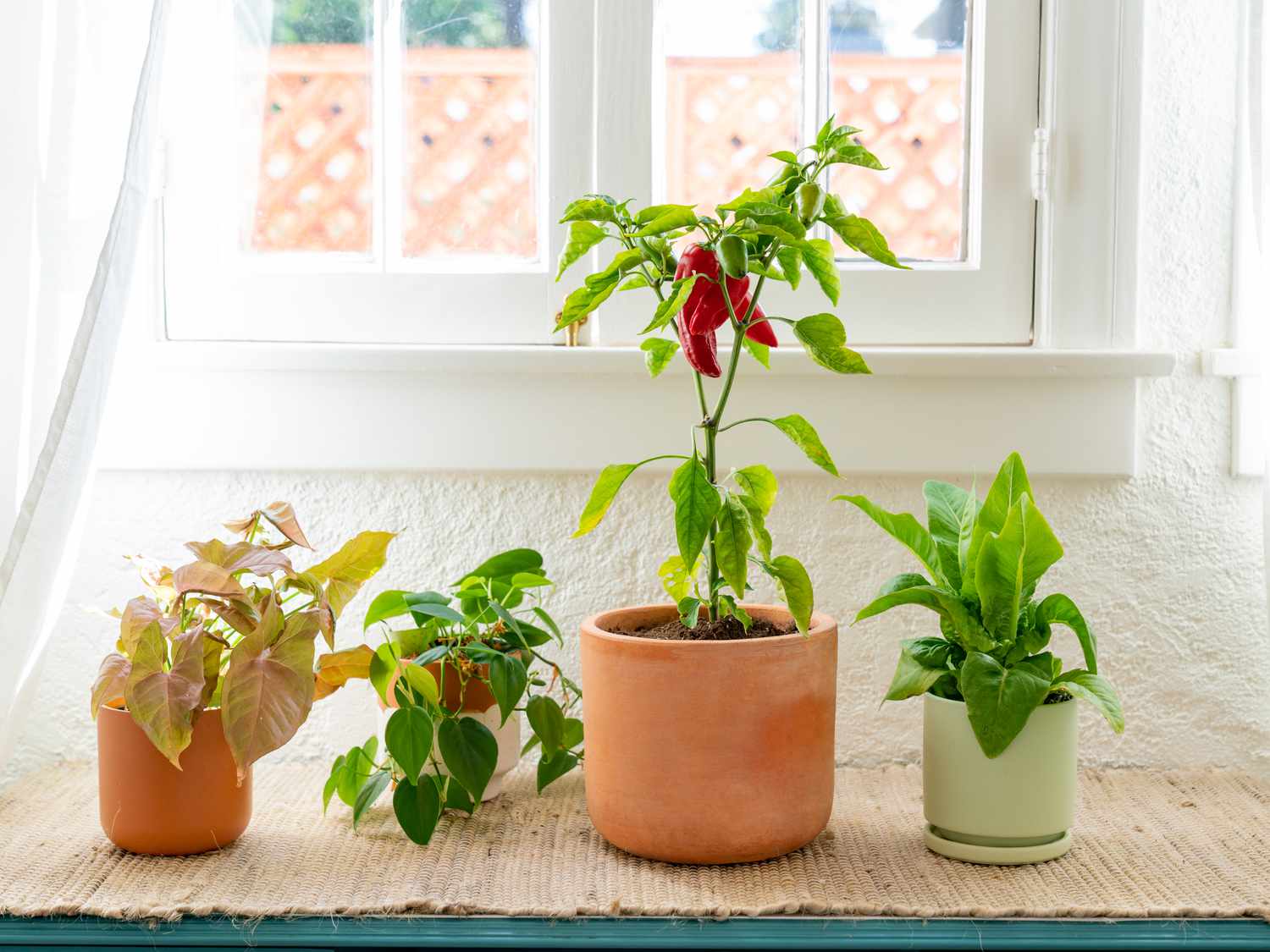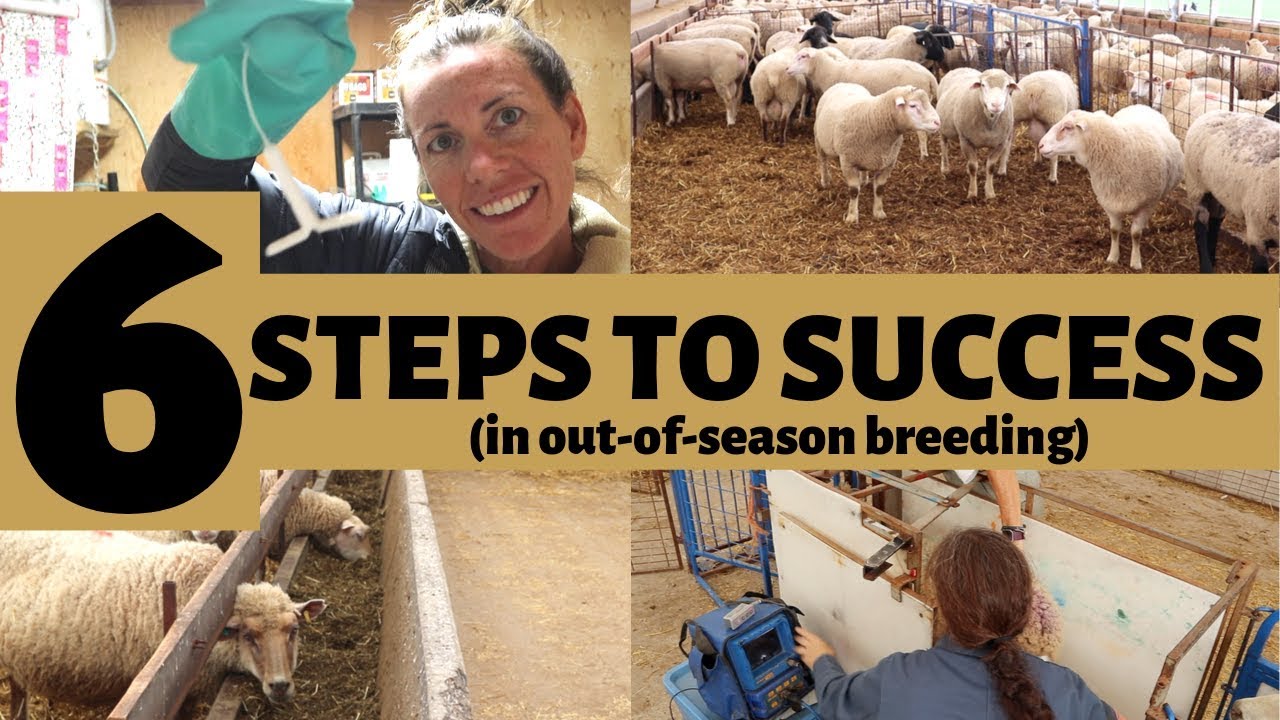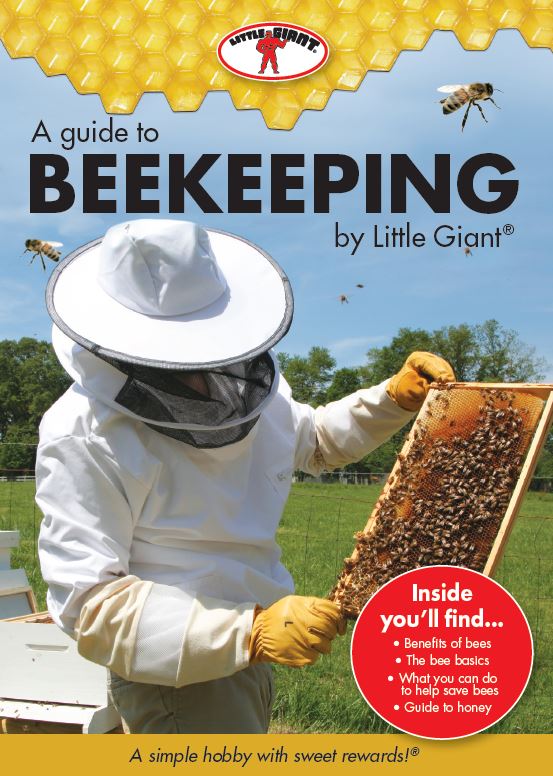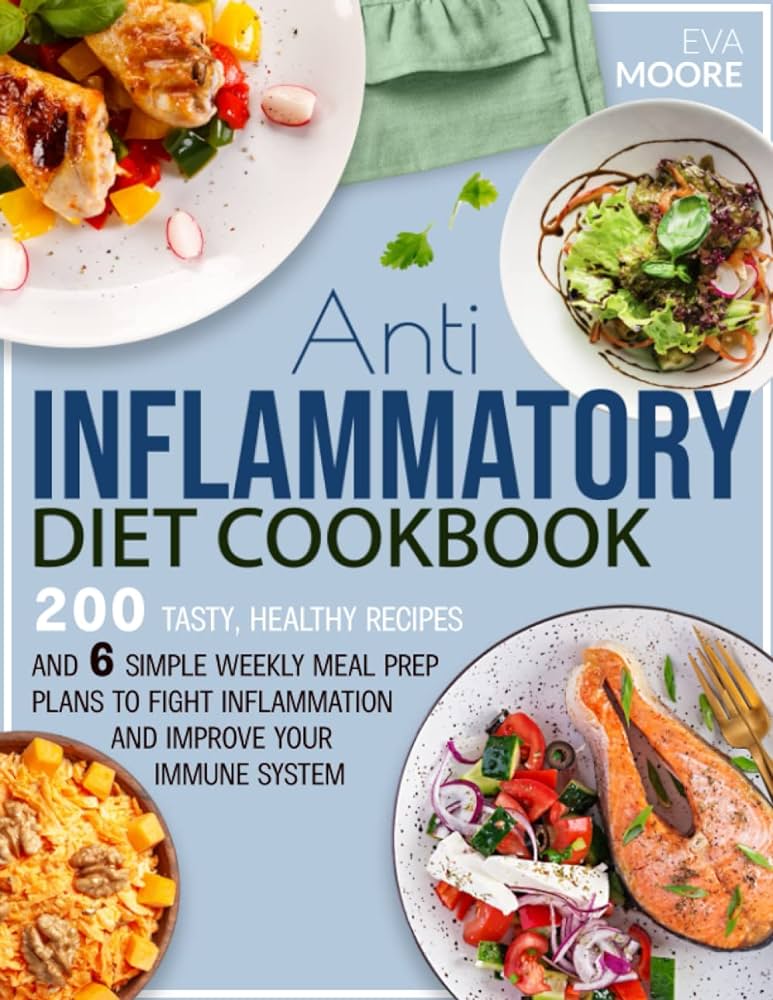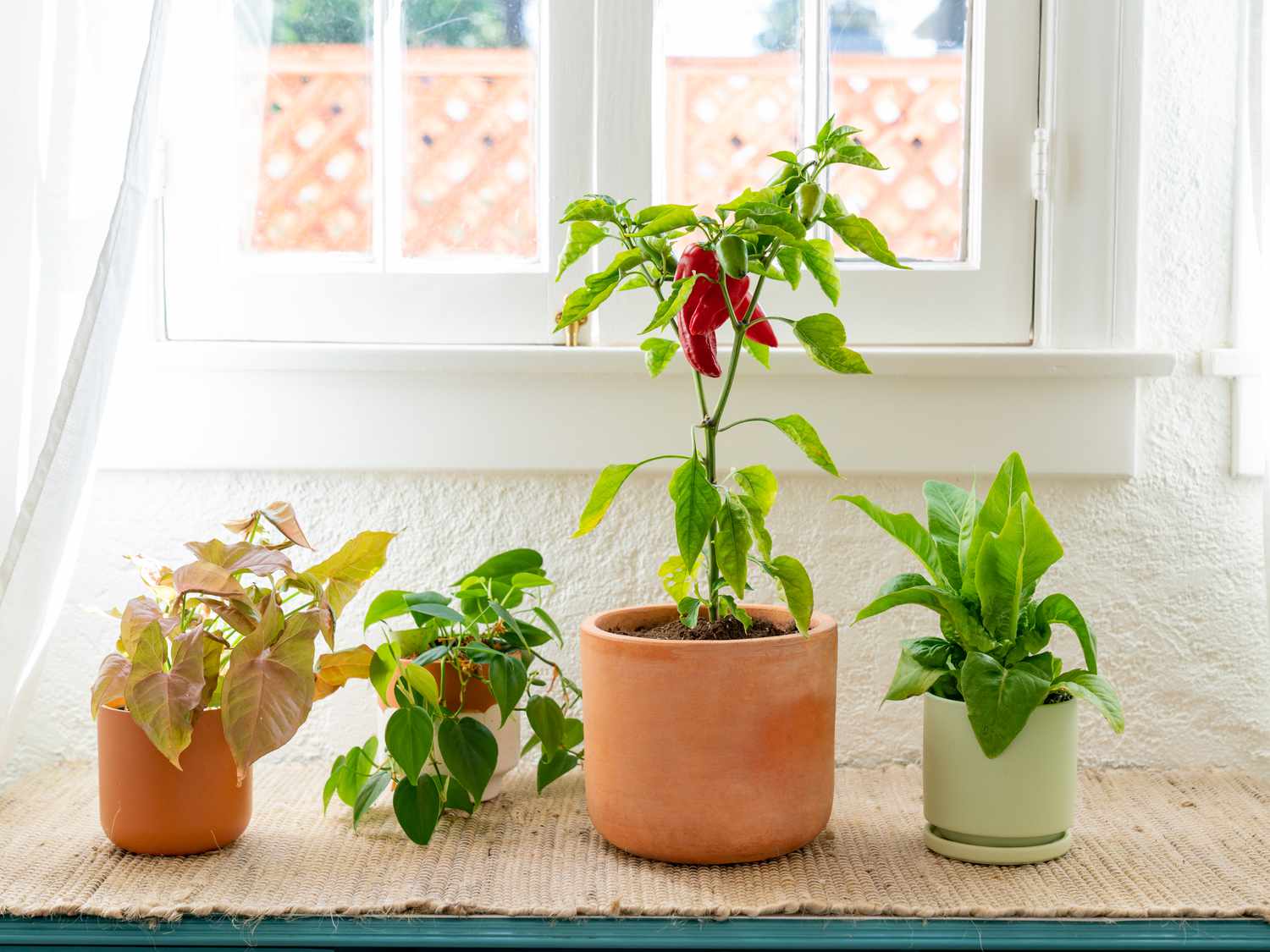“To grow food in a small indoor area, use hydroponics or aeroponics, and choose plants that don’t require much space.” Growing food in a small indoor area doesn’t require a lot of space or a backyard.
With hydroponics or aeroponics, small indoor areas can still produce viable crops. Hydroponics, the process of growing plants without soil, is a method that utilizes water and nutrient solutions. On the other hand, aeroponics uses mist to deliver nutrient solutions to plant roots.
The beauty of these two methods is that they don’t take up as much space as traditional farming methods. Moreover, the choice of crops is important: opt for plants that don’t require much space, such as salad greens, herbs, and strawberries. These plants grow well in small pots or containers and don’t require a lot of maintenance.
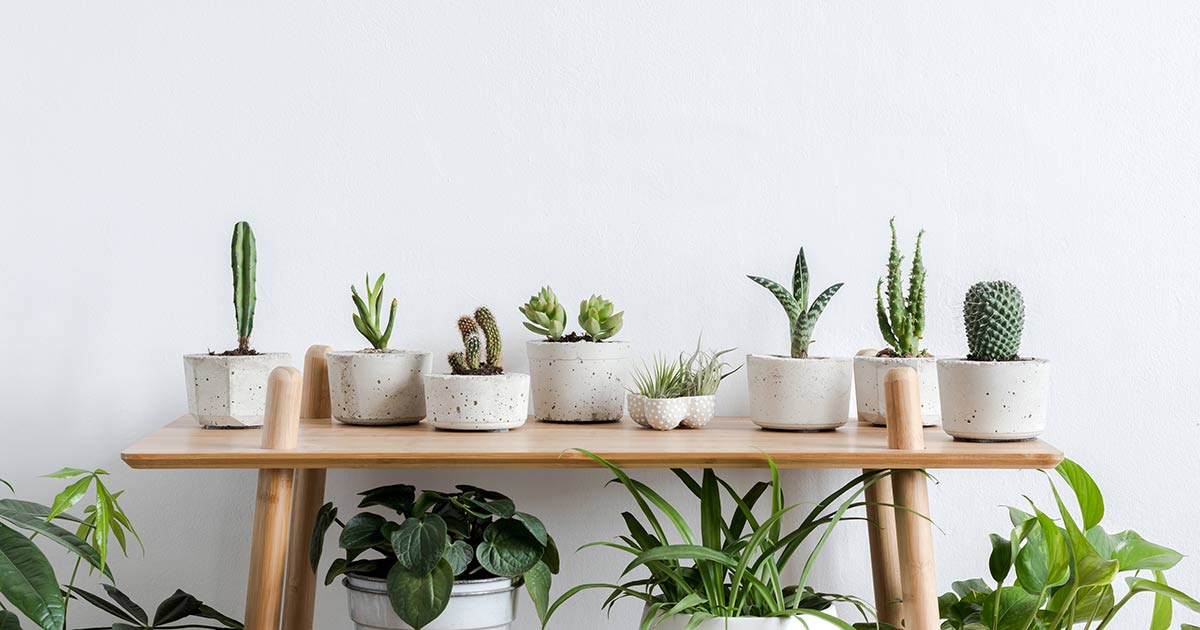
Credit: www.pennington.com
Table of Contents
Choose The Right Plants
Gardening is an excellent way to grow fresh produce and add a touch of greenery to your home. But what if you live in a small apartment or don’t have any outdoor space? No worries! With a little creativity, you can easily grow plants indoors.
Consider The Space And Lighting
Before you start planting, it’s important to consider your space and lighting. Most plants need at least six hours of sunlight a day, so choose a sunny spot near a window if possible. If you don’t have access to natural light, consider investing in a grow light. Additionally, make sure you have enough space for your plants to grow.
Select Plants That Grow Well Indoors
Not all plants can thrive indoors, so it’s important to choose plants that grow well in this type of environment. Some of the best plants to consider include herbs such as basil, parsley, and coriander, salad greens like lettuce, arugula, and spinach, and vegetables such as tomatoes, peppers, and green beans.
Choose Plants That You Will Eat
While it’s important to choose plants that can grow well indoors, it’s equally important to select plants that you enjoy eating. There’s no point in growing food if you’re not going to eat it. Consider your favorite fruits, vegetables, and herbs, and choose those to grow indoors.
Growing food indoors is a great way to make the most of your space and indulge in a bit of gardening. By following these tips, you can create a thriving indoor garden that will provide you with fresh produce throughout the year.
Get Creative With Containers
If you want to start a garden but don’t have outdoor space, don’t worry! You can still grow your food indoors. All you need is a little creativity and some containers to get started. Here are a few ideas to get you started:
Use Hanging Baskets
If you have limited floor space, hanging baskets are a great way to make use of vertical space. They’re also perfect for herbs, which can thrive in smaller containers. Hang your baskets near a window and you’ll have fresh herbs at your fingertips whenever you need them.
Opt For Vertical Gardens
Another way to make the most of limited space is to create a vertical garden. This can be as simple as using a trellis or shelf to hold your containers. You can even create a living wall by attaching containers to a vertical surface like a fence or wall. Just be sure to choose plants that are suitable for the amount of light your wall or shelf receives.
Repurpose Everyday Items Into Planters
Don’t have any fancy containers? No problem! Look around your home for things you can repurpose into planters. Mason jars, coffee cans, and even old shoes can all be turned into unique and functional planters. Just be sure to drill drainage holes in the bottom of your containers if they don’t already have them.
With a little creativity, you can grow your own food no matter how small your indoor space may be. Happy gardening!
Provide Adequate Light
Growing food indoors is an excellent way to ensure a fresh supply of fruits, herbs, and vegetables regardless of the season. While it may seem difficult with limited space, providing adequate light can make a huge difference. A well-lit environment helps plants thrive and provide a bountiful harvest. This article will discuss the types of light plants need, choosing the right light bulbs, and setting up a grow light system to optimize your indoor gardening.
Identify The Types Of Light Plants Need
Plants need two types of light: natural and artificial light. The natural light source is from the sun, and it provides full-spectrum light that promotes plant growth. Unfortunately, natural light isn’t always available, especially if you live in an area where the sun is scarce or during the winter months. In that case, plants rely on artificial light to sustain their growth. Artificial light, on the other hand, comes in various forms such as incandescent, LED, and fluorescent. It is important to understand the types of light plants need to ensure they receive sufficient light for optimal growth.
Choose The Right Light Bulbs
Choosing the right light bulbs is critical in providing adequate light for your plants. LED lights are the best option when it comes to indoor gardening due to energy efficiency and lasting longer. Additionally, LED lights offer full-spectrum lighting and can be customized in color and intensity to best match your plants’ specific needs. On the other hand, fluorescent lights are less efficient and generate higher amounts of heat that could damage your plants. Incandescent lights, while cheaper, are not suitable for indoor gardening as they emit mostly red light, which is not optimal for plant growth.
Set Up A Grow Light System
Once you have the right light bulbs, setting up a grow light system is the next step. A good system should provide light for at least 14-16 hours a day to ensure sufficient exposure. Grow light systems consist of the light bulbs themselves, a ballast to regulate power, and a reflector to distribute the light. When setting up the system, ensure that the fixture is not too close to the plants to avoid burning them with excessive heat. Test the system’s height before planting to ensure that the distance between the light source and plants is appropriate for optimal growth.
Providing adequate light is essential for indoor gardening. Understanding the types of light plants need and choosing the right light bulbs are critical in ensuring your plants thrive. Setting up a grow light system will provide the ideal light exposure for your plants, enabling them to grow healthy and provide a fresh supply of herbs, fruits, and vegetables.
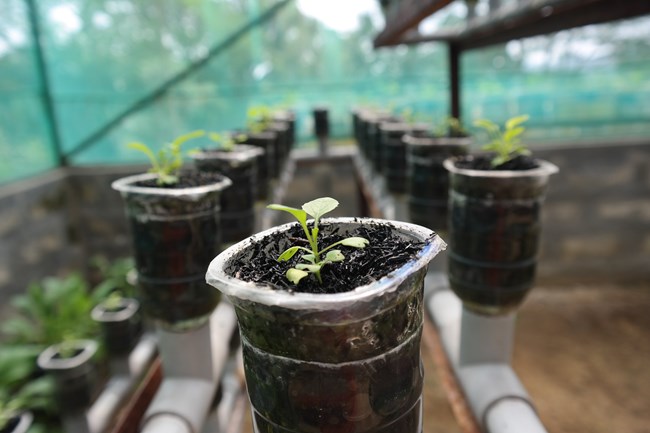
Credit: www.nps.gov
Ensure Proper Soil And Watering
Growing food in small indoor areas can be challenging but it’s not impossible if you know what you’re doing. One of the most important aspects of successful indoor gardening is ensuring proper soil and watering. Without proper soil and watering, your plants won’t grow strong and healthy.
Choose Quality Potting Soil
The type of soil you choose for your indoor plants can make all the difference. Choose a high-quality potting soil that’s specifically designed for indoor gardening. Look for one that contains a mixture of peat moss, vermiculite, and perlite. These ingredients are essential for good drainage and aeration, which are both critical for healthy root growth.
Consider Self-watering Systems
A self-watering system can make indoor gardening much easier and more efficient. These systems work by filling a reservoir with water, which is then distributed to the plants as needed. This can help ensure that your plants always have enough water without over or under-watering them. There are many different types of self-watering systems available, so be sure to choose one that’s right for your specific needs.
Follow Proper Watering Techniques
Proper watering is crucial for the health and survival of your indoor plants. Over-watering can lead to root rot, while under-watering can cause the plants to wither and die. When watering, be sure to water thoroughly until the water starts to drain out the bottom of the pot. This will help ensure that the soil is evenly moistened. Allow the soil to dry out slightly between waterings, but don’t let it completely dry out.
Now that you know how to ensure proper soil and watering, you can be confident in your ability to grow healthy, strong plants in your small indoor area. With a little bit of knowledge and some TLC, your indoor garden can flourish and provide you with fresh, delicious produce all year round.
Use Natural Fertilizers And Pest Control
When it comes to growing food in a small indoor area, one of the most important things to consider is the type of fertilizers and pest control methods you use. You want to ensure that you are using natural methods as much as possible to avoid any harmful chemicals.
Make Your Own Compost
One of the best things you can do for your indoor garden is to make your own compost. Not only is it cost-effective, but it’s also a great way to recycle your food scraps and create nutrient-rich soil for your plants. To make your own compost, simply save your food scraps in a bin or container and let them decompose over time. You can then add this compost to your soil to give your plants the necessary nutrients they need to grow.
Utilize Natural Pest Control Methods
To keep pests at bay, it’s important to use natural pest control methods. Some of the best natural pest control methods include planting companion plants that repel pests, using sticky traps, and introducing beneficial insects like ladybugs or praying mantises into your indoor garden. Additionally, using organic pesticides made from natural ingredients like neem oil or garlic can help keep pests away without harming your plants or the environment.
Avoid Harmful Chemicals
Avoid using harmful chemicals such as synthetic fertilizers or pesticides in your indoor garden. These can harm your plants, as well as the environment and your health. Instead, opt for natural alternatives like compost, natural fertilizers, and organic pesticides. These will help create a healthy and thriving indoor garden while also promoting sustainability and environmental responsibility.
By using natural fertilizers and pest control methods, you can create a healthy and thriving indoor garden that produces fresh, organic food that is good for you and the environment.
Maximize Space With Companion Planting
Living in a small apartment or just not having space for an outdoor garden doesn’t mean you have to give up on growing your own produce. With indoor gardening, you can enjoy fresh herbs and vegetables within the confines of your home. One popular technique for maximizing space and yields in small gardens is companion planting.
Choose Companion Plants That Benefit Each Other
Companion plants are those that benefit each other when grown in close proximity. For example, planting basil, parsley, or cilantro near tomatoes can improve the size and taste of the tomatoes while also deterring pests like aphids and spider mites. Other common companion plant pairings include:
| Plant | Companion Plant |
|---|---|
| Lettuce | Carrots, radishes, strawberries |
| Beans | Cucumbers, corn, peas |
| Eggplant | Bell peppers, marigolds |
Plan Out Your Garden To Maximize Space
Planning is crucial for a successful indoor garden, especially when space is limited. Before you start planting, take the time to map out your garden. Decide which plants you want to grow and how much space they will need. Consider using vertical space with shelves, hanging baskets, or wall-mounted planters. Make sure each plant has enough light, and group plants with similar sun requirements together.
Utilize Companion Planting For Pest Control
Not only do companion plants improve yields, but they can also repel pests and attract beneficial insects to your garden. For example, planting marigolds near tomatoes can help ward off aphids, while rosemary can deter carrot flies. Additionally, planting flowering plants like lavender and chamomile can attract pollinators like bees and butterflies.
- Use companion planting to improve yields and repel pests.
- Plan your garden to maximize limited space with shelves, hanging baskets, and wall-mounted planters.
- Choose companion plants wisely to ensure they benefit each other.
With these tips, you can make the most of your small indoor garden and enjoy fresh, homegrown produce year-round.
Harvest And Replant Regularly
Growing your own food indoors can provide numerous benefits, from having fresh produce at your fingertips to reducing your environmental impact. However, in order to maintain a healthy and productive indoor garden, it is important to harvest and replant regularly. This article will focus on the best practices for harvesting and replanting your indoor garden to ensure that you can enjoy fresh produce year-round.
Harvest Plants As Soon As They Are Ready
It is important to harvest plants as soon as they are ready to ensure that they continue to produce. Different plants have different harvest times, so it is important to research the needs of each type of plant to determine when to harvest. Typically, plants should be harvested when they reach their mature size, but before they begin to decline in quality or flavor.
Additionally, harvesting plants regularly will also encourage new growth and stimulate the production of more fruit or vegetables. This means that you can enjoy a more bountiful harvest for a longer period of time.
Replant Seeds And Cuttings To Keep Your Garden Going
Replanting seeds and cuttings is an essential part of maintaining an indoor garden. As you harvest your plants, you should immediately plant new seeds or cuttings in their place. This will ensure that your garden remains productive and constantly producing fresh produce.
When replanting, make sure to follow the planting instructions for each individual plant. This may involve soaking seeds in water overnight or planting cuttings in soil that is kept consistently moist. Additionally, it is important to space out your new plants so that they have enough room to grow and thrive.
Rotate Your Crops To Keep The Soil Healthy
Rotating crops is an important practice in all types of gardening and is especially crucial in an indoor garden. Rotating your crops helps to prevent soil depletion and nutrient deficiencies by allowing different plants to use different nutrients and minerals from the soil.
When rotating your crops, make sure to follow a system that makes sense for the layout of your garden. This may involve planting plants that have different nutrient needs in different parts of the garden or planting crops that have different root systems to help aerate and loosen the soil.
By harvesting and replanting regularly and rotating your crops, you can easily grow fresh produce in a small indoor area year-round. So go ahead and start your indoor garden today!
Enjoy The Benefits Of Indoor Gardening
Indoor gardening is one of the most beneficial hobbies you can adopt, especially if you live in an apartment or small house with limited outdoor space. With the help of some basic equipment, you can easily turn your small indoor area into a mini garden, where you can grow aromatic herbs, fresh fruits, and vegetables all year round and enjoy numerous benefits.
Save Money On Groceries
One of the most significant benefits of indoor gardening is that it can save you a considerable amount of money on groceries every month. By growing your own food, you eliminate the need to purchase expensive produce from the grocery store, saving money that can be allocated to other areas of your budget.
Improve Indoor Air Quality
Indoor plants not only add aesthetic appeal to your home but can also purify the air you breathe. Many indoor plants act as natural air purifiers by removing toxins and pollutants from the air, improving air quality, and adding oxygen to your home. This can create a healthier indoor environment and provide numerous mental and physical benefits.
Benefit Your Mental Health
Indoor gardening has numerous benefits for your mental health as well. The process of nurturing and caring for plants can help reduce stress, lower blood pressure, and promote feelings of relaxation and well-being. It can also provide a sense of accomplishment and satisfaction as you watch your plants grow and thrive.
Overall, indoor gardening is a fantastic way to improve your quality of life while enjoying the benefits of fresh, home-grown produce and healthier indoor air. So why not take the first step towards creating your mini garden today?

Credit: www.amazon.com
Conclusion
With the rising popularity of urban farming and small space gardening, growing food in a small indoor area has become an achievable goal for many people. There are several options for those who want to grow their own food within the limited space of their homes, including hydroponic systems, vertical gardens, and container gardening.
Regardless of which method you choose, it’s important to remember that proper lighting, watering, and soil preparation are essential for successful indoor gardening. By following these tips and techniques, anyone can start producing their own fresh and healthy food right in their own home.





